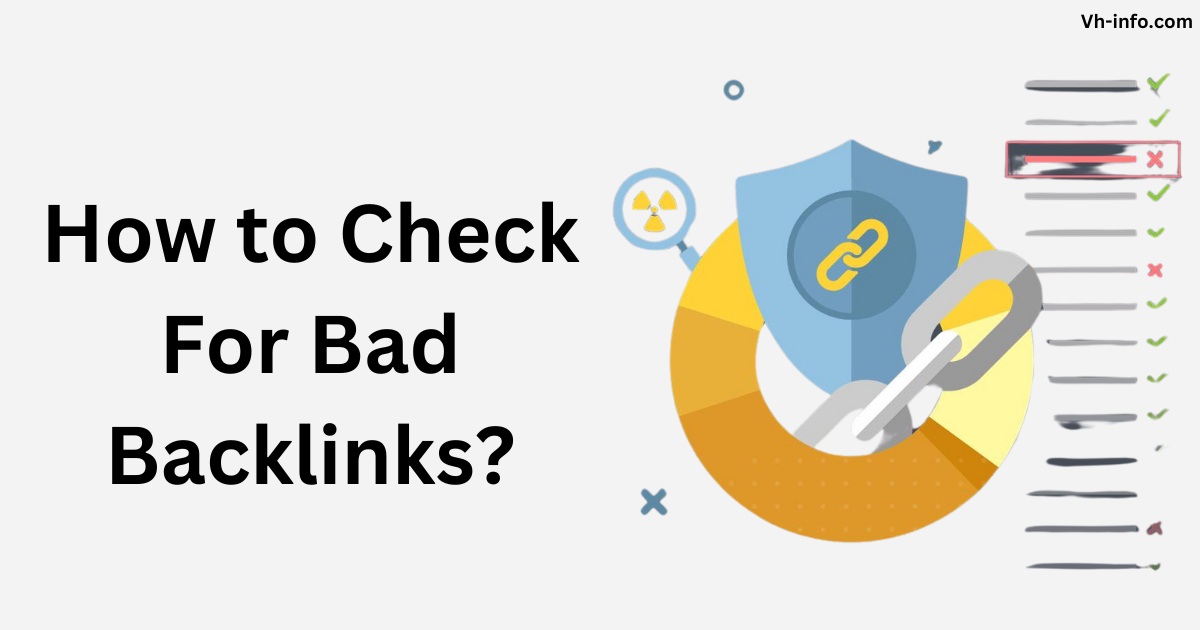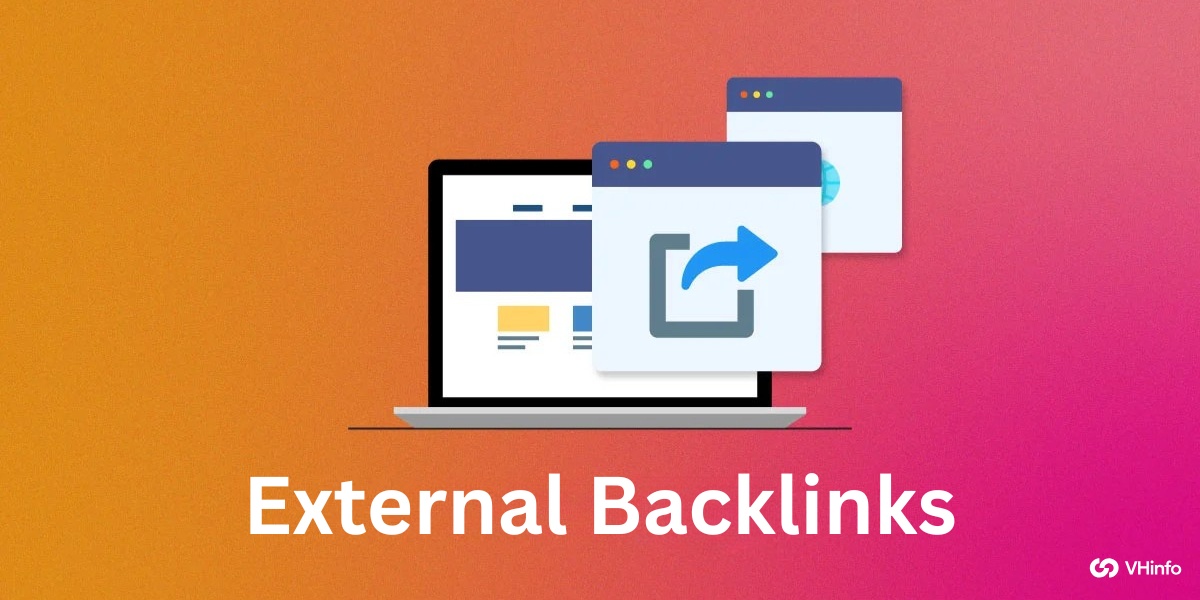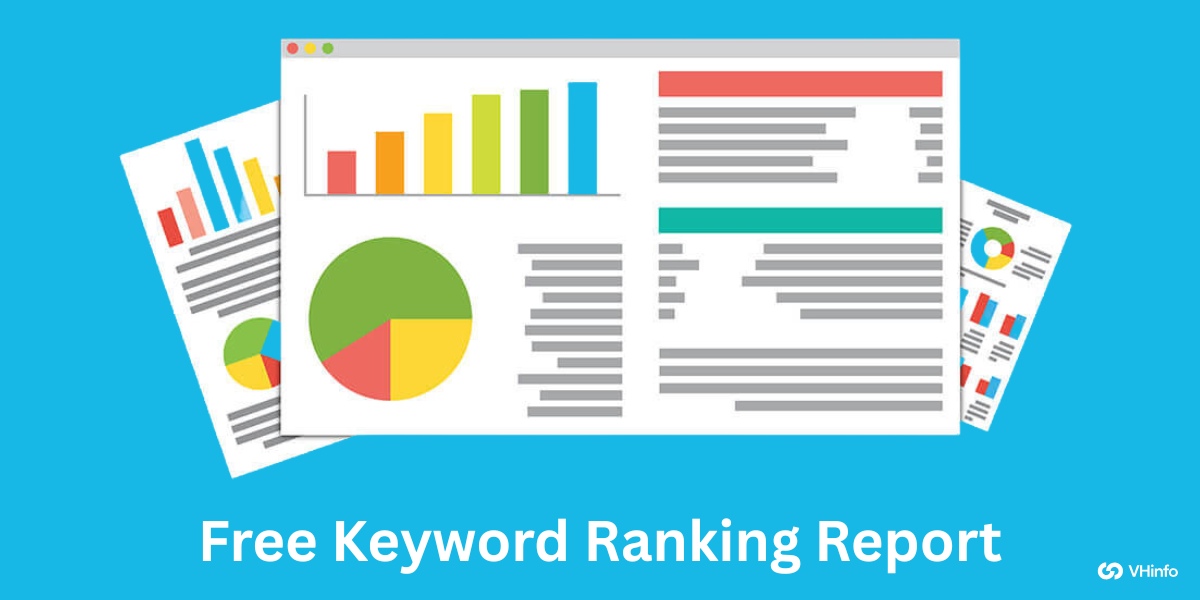As a SaaS company, your website’s search engine rankings are important for driving organic traffic and attracting potential customers.
One key factor that impacts your SEO performance is the quality of your backlink profile. While high-quality backlinks from reputable sources can boost your rankings, bad or toxic backlinks can harm your website’s reputation and even lead to Google penalties.
At VH-info, we understand the importance of maintaining a healthy backlink profile for SaaS websites. In this comprehensive guide, we’ll dive into what makes a backlink “bad,” how to identify and remove them, and best practices for preventing negative SEO attacks.
What Are Bad Backlinks?
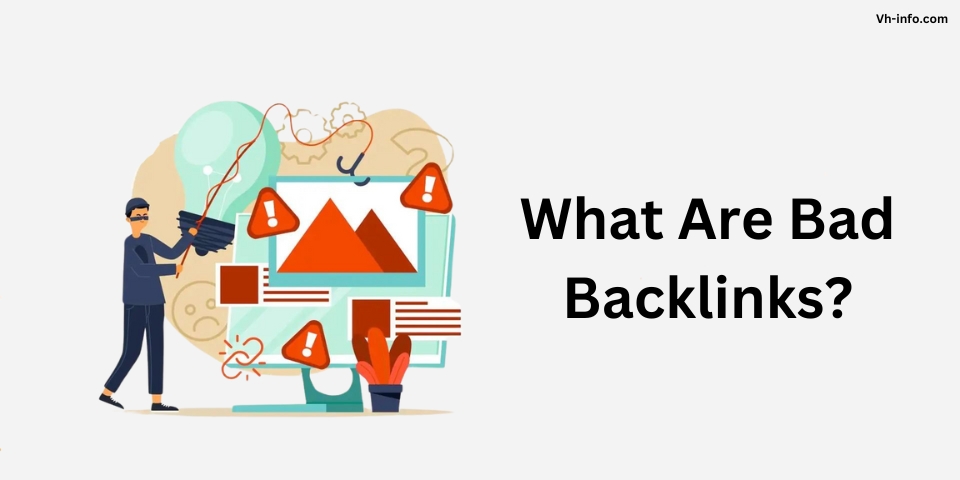
Bad backlinks, also known as toxic backlinks, are low-quality or link spams pointing to your website from untrustworthy or irrelevant sources. These links can be acquired through link schemes, paid links, or negative SEO attacks from competitors.
Google’s algorithm is designed to identify and devalue bad backlinks, as they don’t reflect genuine endorsements of your content. In some cases, having too many toxic backlinks can even result in a manual action or penalty from Google, causing your search rankings to plummet.
Common Characteristics of Harmful Backlinks
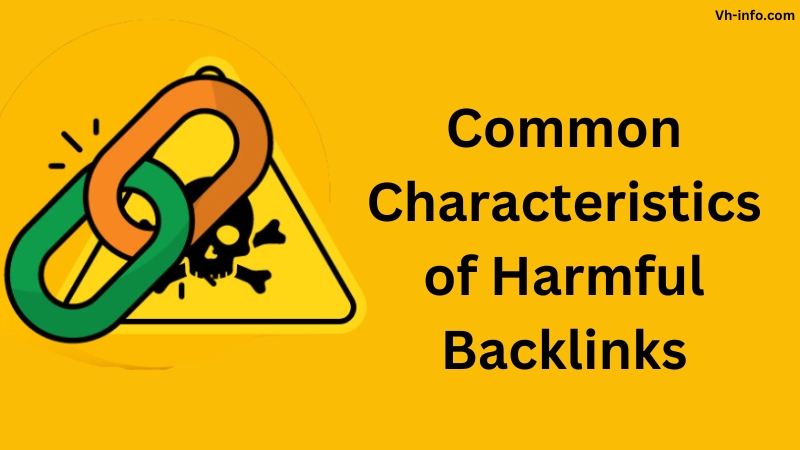
To effectively identify and remove bad backlinks, it’s important to understand their common characteristics:
- Spammy or Low-Quality Websites: Backlinks from websites with thin or duplicate content, excessive ads, or a high spam score are considered low-quality. Other Signs of a spammy website and link farms may include slow loading times, broken links, intrusive ads, or an unresponsive design.
- Irrelevant or Unrelated Sources: Links from websites that have no topical relevance or quality content to your SaaS product or industry are often seen as unnatural by search engines.
- Paid or Unnatural Links: Participating in link schemes or buying links can result in unnatural, toxic backlinks that violate Google’s guidelines.
- Over-Optimized Anchor Texts: An unnatural concentration of exact-match or keyword-rich anchor texts can signal manipulation to search engines.
- Negative SEO Attacks: Competitors may engage in black hat SEO tactics to point spammy links to your site, attempting to harm your search rankings.
- Link Networks or Link Exchanges: Engaging in reciprocal link exchanges or private blog networks (PBNs) can lead to a pattern of low-quality, manipulative links.
5 Reasons Bad Backlinks Are Harmful to Your Site
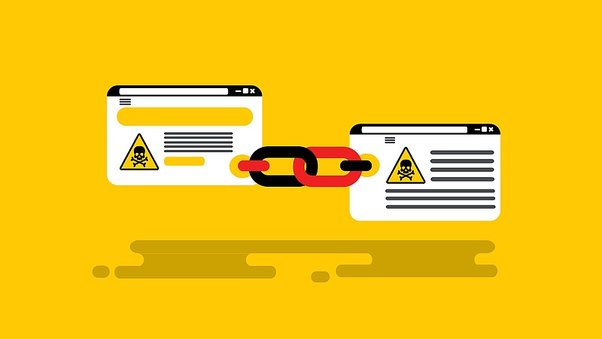
- Google Penalties: Having a significant number of toxic backlinks can trigger a manual action or algorithmic penalty from Google, causing your search rankings to drop drastically.
- Negative SEO: Competitors may target your website with bad referring domains, spam links as part of a negative SEO attack, attempting to harm your search engine rankings. this can have a negative impact on your search results. Best way to tackle such inbound links is using a toxic backlink checker tool and disavowing them as and when you discover them.
- Poor Link Quality: Low-quality links from spammy or irrelevant sources don’t pass much value to your website and can dilute the overall quality of your backlink profile.
- They Damage Your Brand Reputation: Being associated with low-quality or spammy websites through toxic backlinks can harm your SaaS brand’s online reputation and credibility.
- Poor SEO Performance: Bad backlinks can hinder your website’s ability to rank well in search engine results, limiting your organic traffic and potential customer acquisition.
How to Find and Remove Bad Backlinks?

Identifying Bad Backlinks
To find toxic backlinks pointing to your site, use these SEO tools:
- Ahrefs/Semrush: Conduct a backlink audit using Ahrefs or Semrush to analyze your link profile and identify low-quality or suspicious links.
- Moz Link Explorer: Use Moz’s Link Explorer tool to assess the quality of your backlinks based on factors like domain authority and spam score. Moz also has free tools for analyzing incoming link domains, link checker and keyword research.
- Google Search Console: Check the “Links to Your Site” report in Google Search Console to see a list of domains linking to your website and identify any suspicious sources.
Removing Bad Backlinks
Once you’ve identified toxic backlinks, take these steps to remove them:
- Contact the Website Owner: Reach out to the site owner or webmaster and request them to remove the bad link. Be polite and explain why the link is harmful to your website.
- Use Google’s Disavow Tool: If you’re unable to get a toxic link removed, use Google’s Disavow Tool to tell Google to ignore the link when assessing your site’s backlink profile. Upload a disavow file listing the bad links or domains.
Monitor Your Progress
Regularly monitor your backlink profile using tools like Ahrefs, Semrush, or Google Search Console to ensure that no new toxic backlink data appear and that your link building efforts are focused on acquiring high-quality, relevant links.
Best Practices For Maintaining a Healthy Backlink Profile
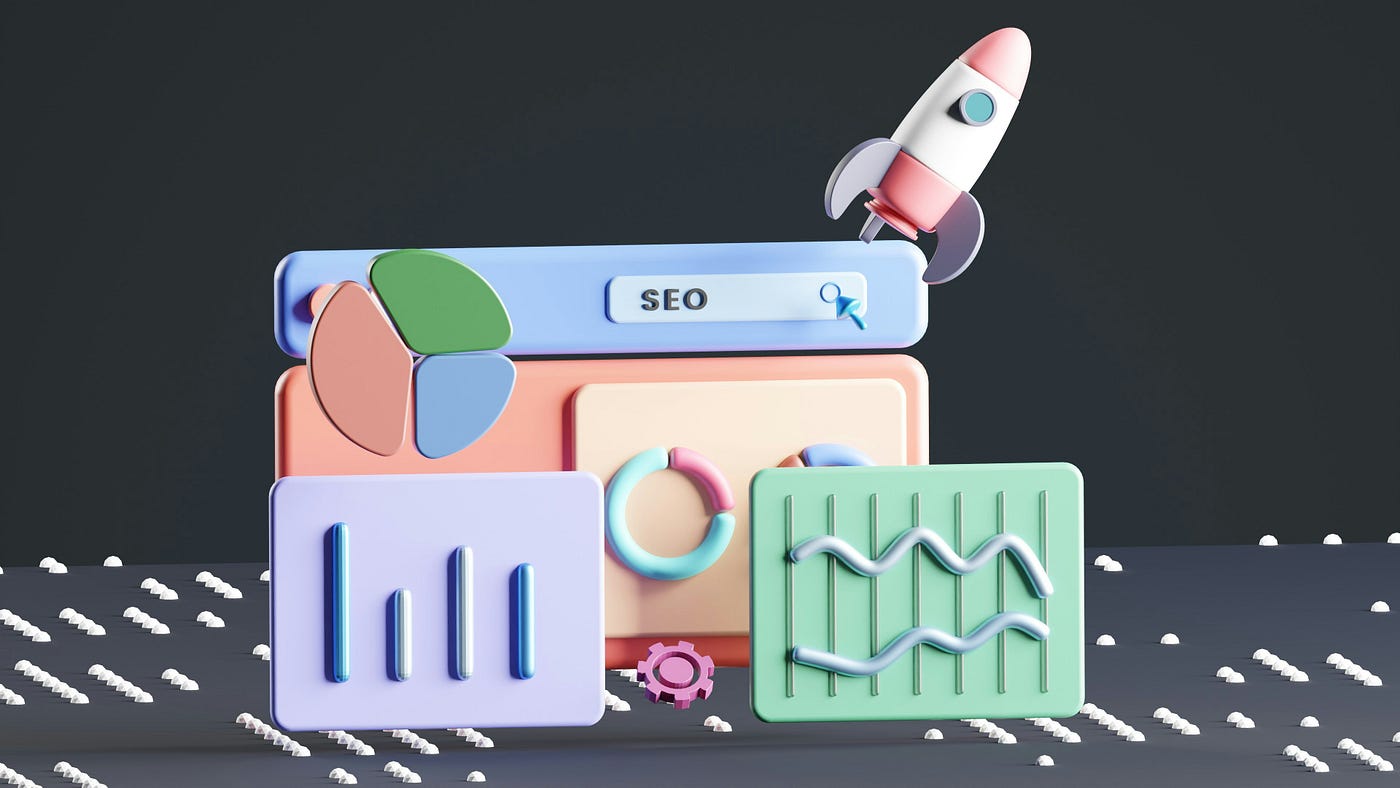
- Regularly conduct backlink audits to identify and remove any toxic links
- Focus on earning high-quality, relevant links from authoritative websites in your industry
- Avoid participating in link schemes, paid links, or reciprocal link exchanges
- Use natural, diverse anchor texts when building links to your site
- Monitor your competitor’s backlink profiles to identify potential negative SEO attacks
- Create valuable, linkable content assets that attract natural, high-quality links
FAQ’s:
What Makes a Backlink “Bad” or “Toxic”?
A backlink is considered bad or toxic if it comes from a low-quality, spammy, or irrelevant source, violates Google’s guidelines, or is part of a manipulative link scheme.
Can Bad Backlinks Lead to a Google Penalty?
Yes, having a significant number of toxic backlinks pointing to your website can trigger a manual action or algorithmic penalty from Google, causing your search rankings to drop.
How Often Should I Check My Backlink Profile?
It’s recommended to conduct a thorough backlink audit at least once a quarter to identify and remove any toxic links and monitor your link profile regularly for any suspicious changes.
Can a Single Bad Backlink Ruin My Website’s SEO?
A single bad backlink is unlikely to have a major impact on your website’s SEO. However, a pattern of toxic links can harm your search rankings over time.
Is it Better to Remove a Bad Link or Disavow it?
It’s always best to first attempt to remove a bad link by contacting the website owner. If removal isn’t possible, then using Google’s Disavow Tool is the next best option.
What’s the Difference Between a Low-Quality Link and a Toxic Link?
A low-quality link comes from a website with poor content or low domain authority, while a toxic link is spammy, manipulative, or violates Google’s guidelines. Both can harm your SEO, but toxic links pose a greater risk.
Is There a Way to Automatically Filter Out Bad Backlinks?
While tools like Ahrefs and Semrush can help identify potentially toxic links, there’s no foolproof way to automatically filter out all bad backlinks. A manual review is still necessary.
Will Removing Bad Backlinks Improve My Rankings?
Removing toxic backlinks can help improve your website’s overall link quality and reduce the risk of a Google penalty. However, the impact on rankings depends on the severity of your bad link problem and other SEO factors.
Conclusion
Maintaining a healthy backlink profile is essential for SaaS companies looking to improve their search engine rankings and drive organic website traffic.
To keep your website safe from harmful links, learn what makes a backlink bad. Check your links often and remove the ones that are harmful to protect your site from negative SEO and low-quality links.
At VH-info, our team of link-building experts can help you identify toxic backlinks using backlink analysis, implement a link removal strategy, and focus on acquiring high-quality, relevant links that boost your SaaS website’s google rankings.
Contact us today to learn more about our SaaS link building services , SEO for Startps and white label link building services and how we can help you achieve sustainable SEO success.
